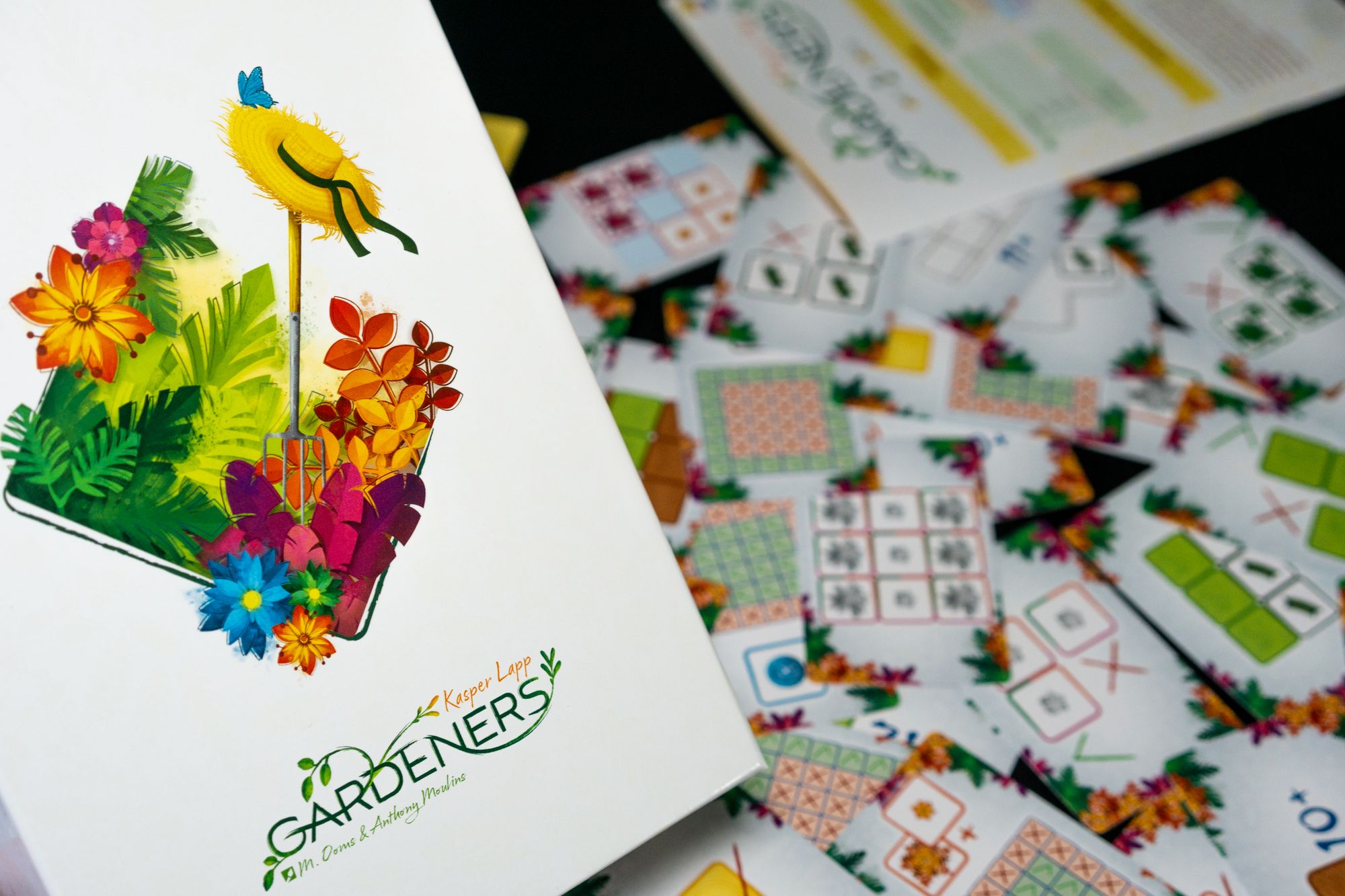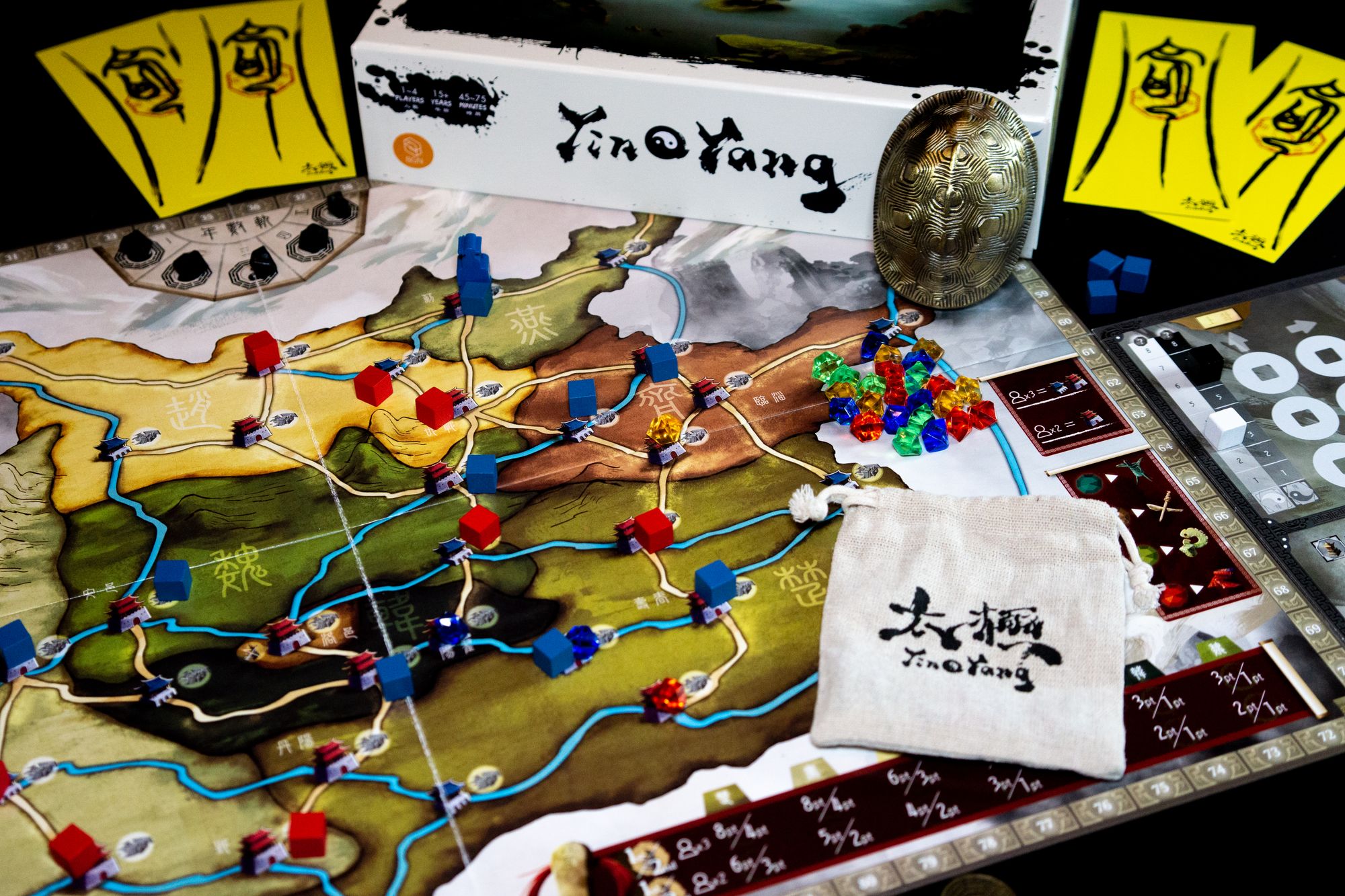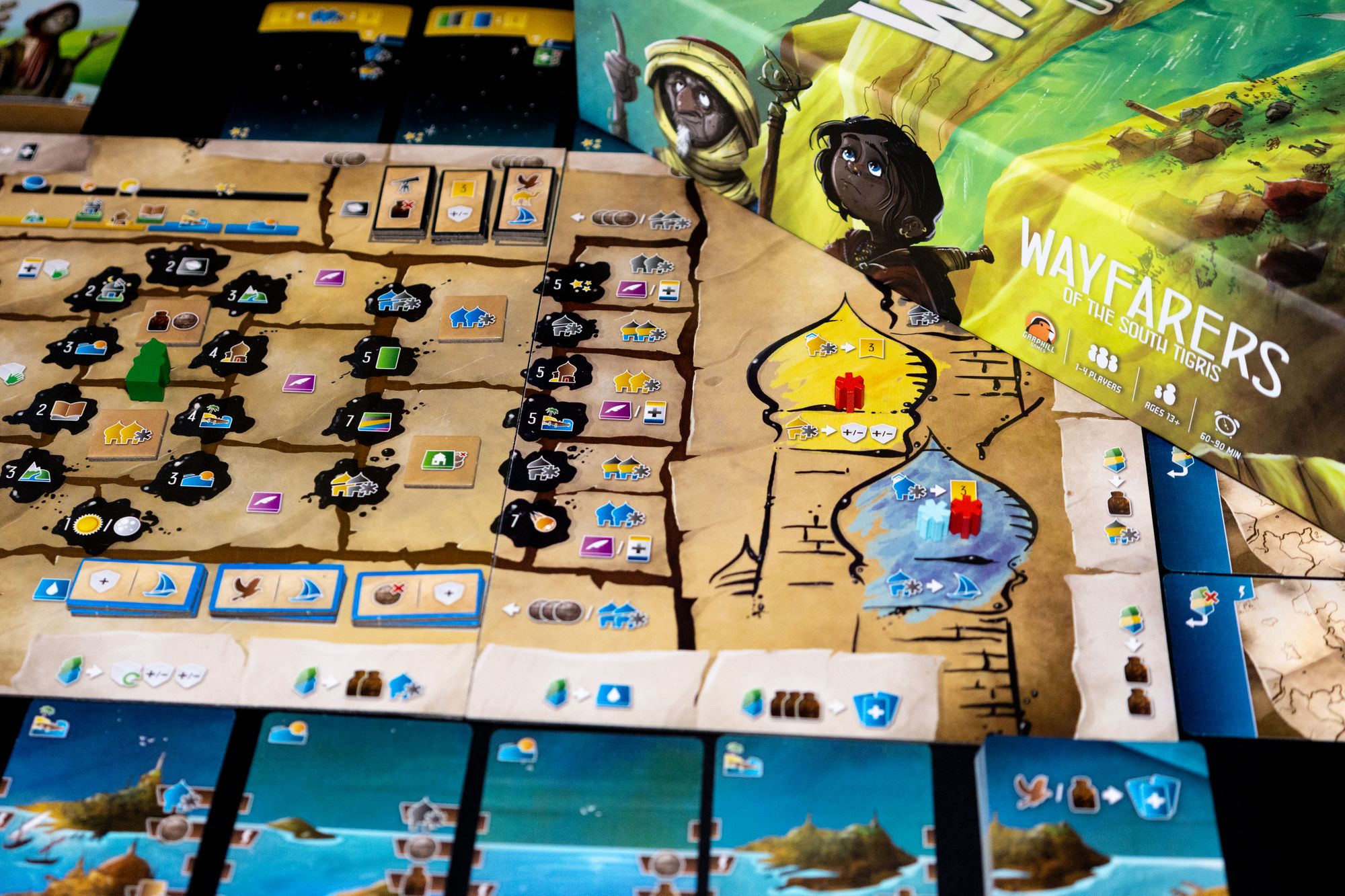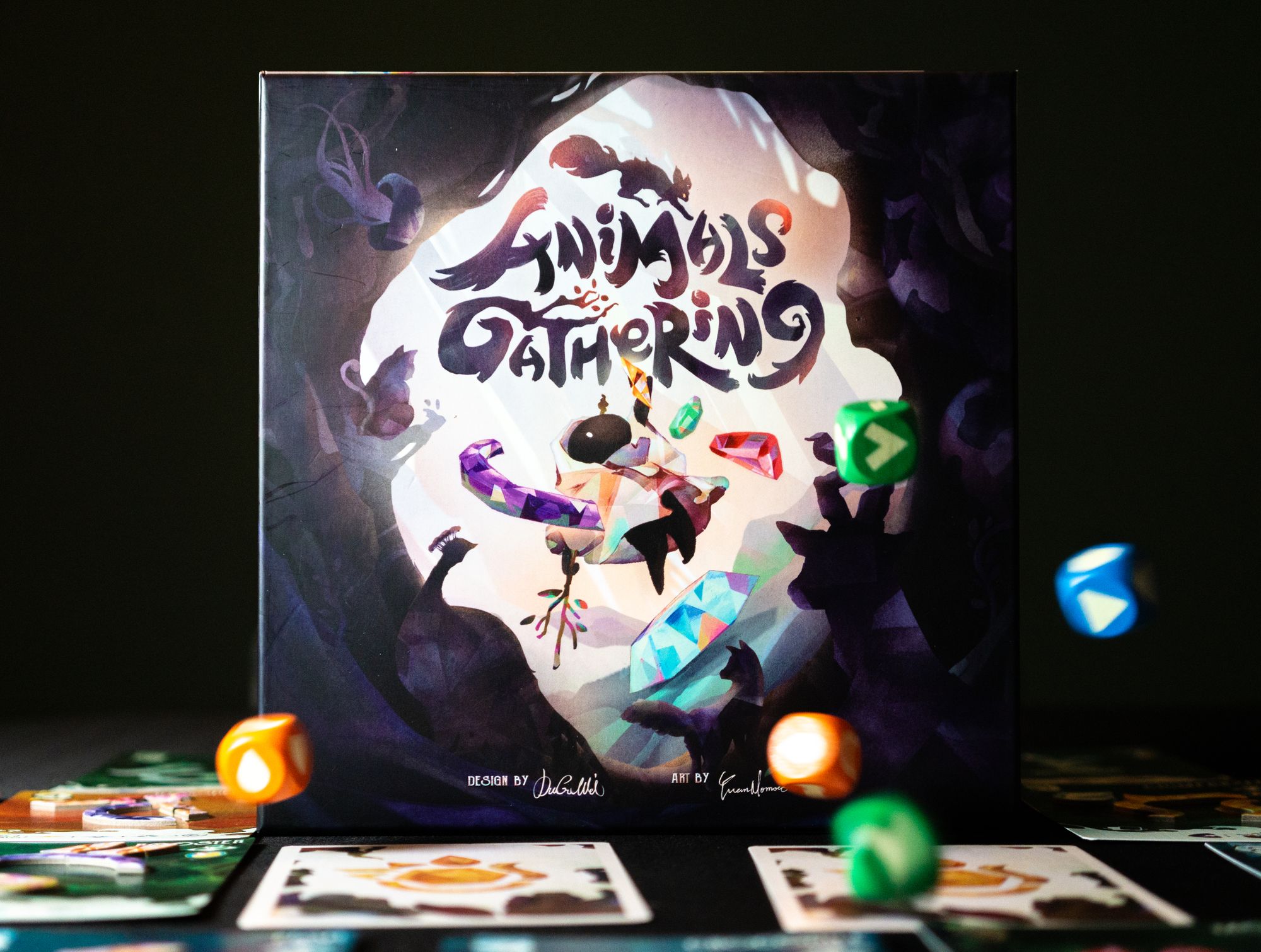Review: Tiletum
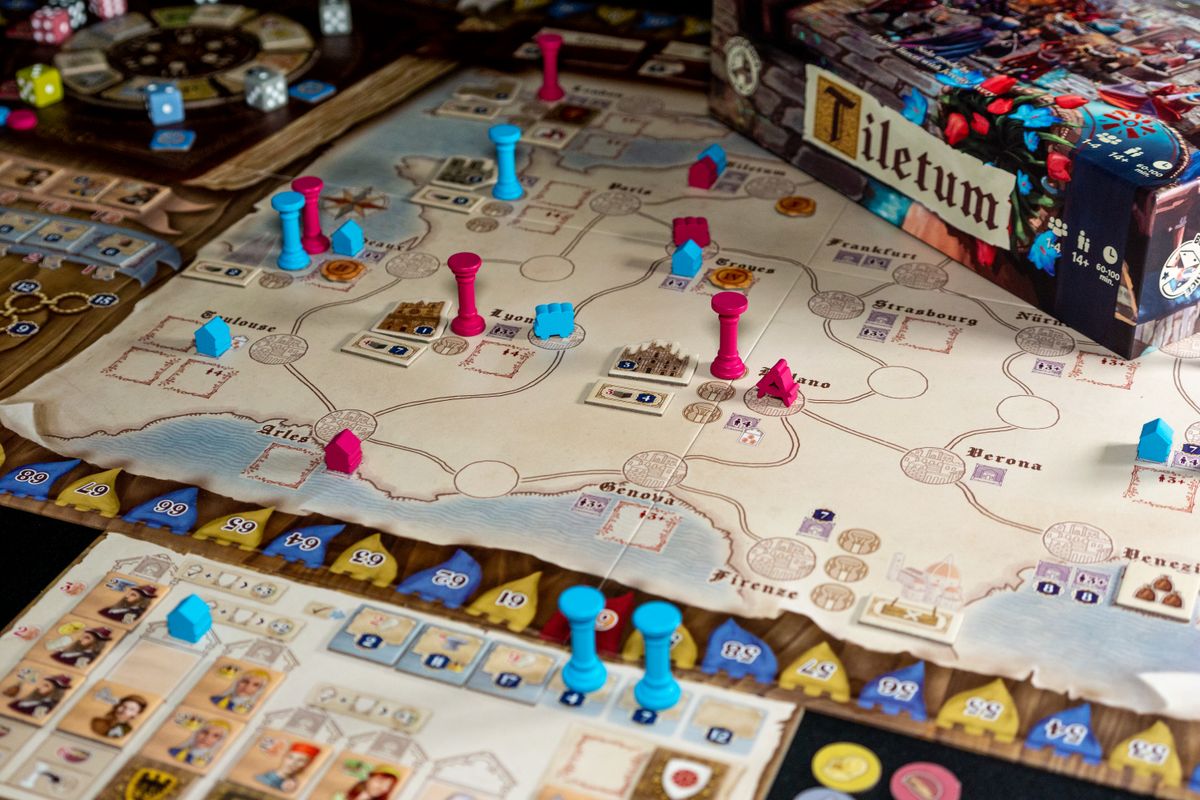
Use dice for resources and actions to gain riches in the Renaissance.
Designed by Simone Luciani and Daniele Tascini and published by Board&Dice
👤 1-4 players
🧩 Dice Drafting, Action Selection, Action Points
⚖️ Medium
Overview
In Tiletum, you and fellow players take on the roles of rich merchants traveling throughout Europe, from Flanders to Venice, during the Golden Age of the Renaissance.
You will travel to various cities to acquire trade contracts for wool and iron, as well as a collection of their coats of arms. You must collect the required resources to fulfill contracts, invest in the construction of monumental cathedrals, gain the favor of noble families, and participate in important fairs where your main business occurs. You will also use the services of notable people who will be welcomed into your houses. You will thus gain prestige that will make you the most famous merchant of the Renaissance.
—description from the publisher
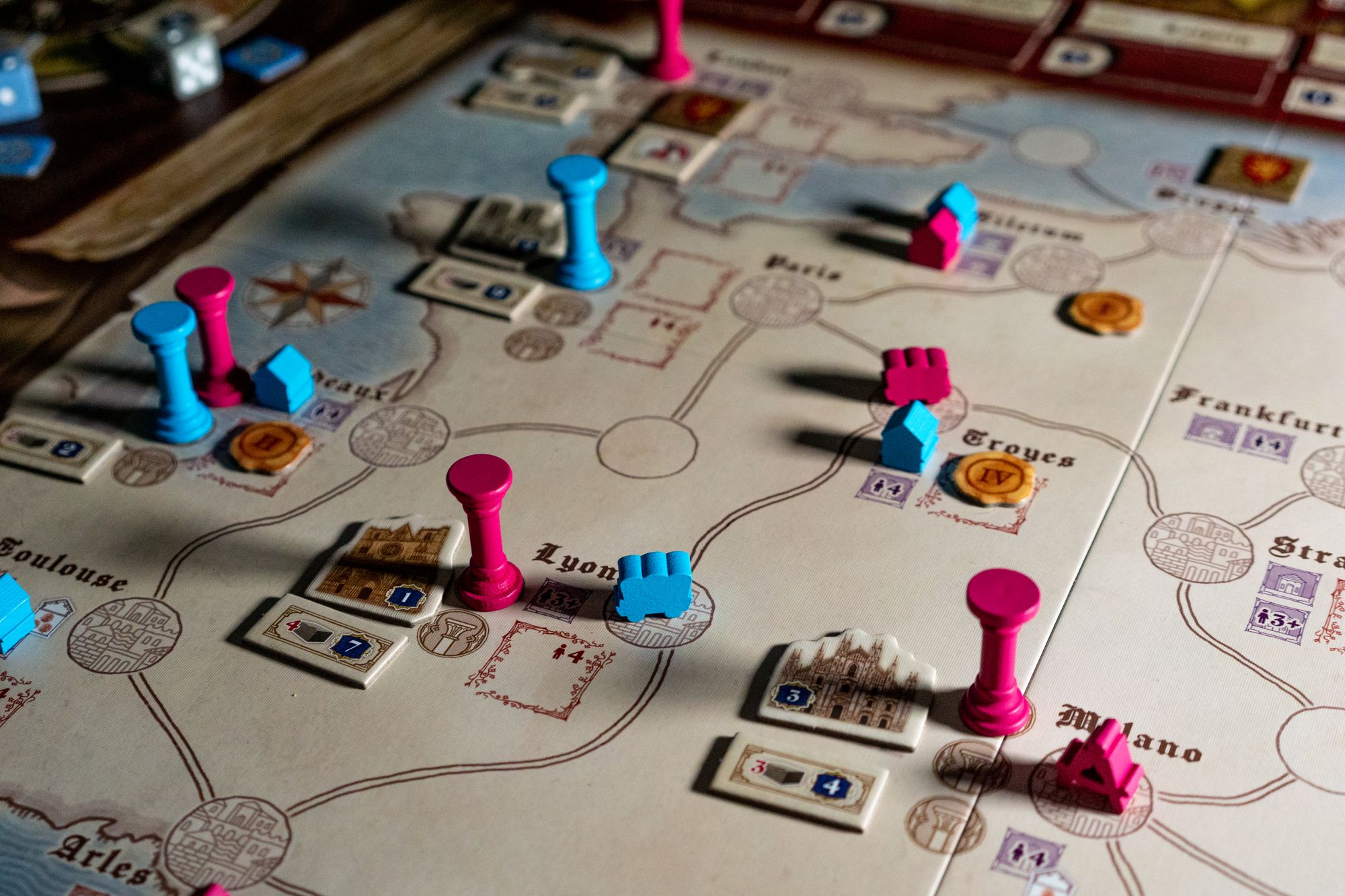
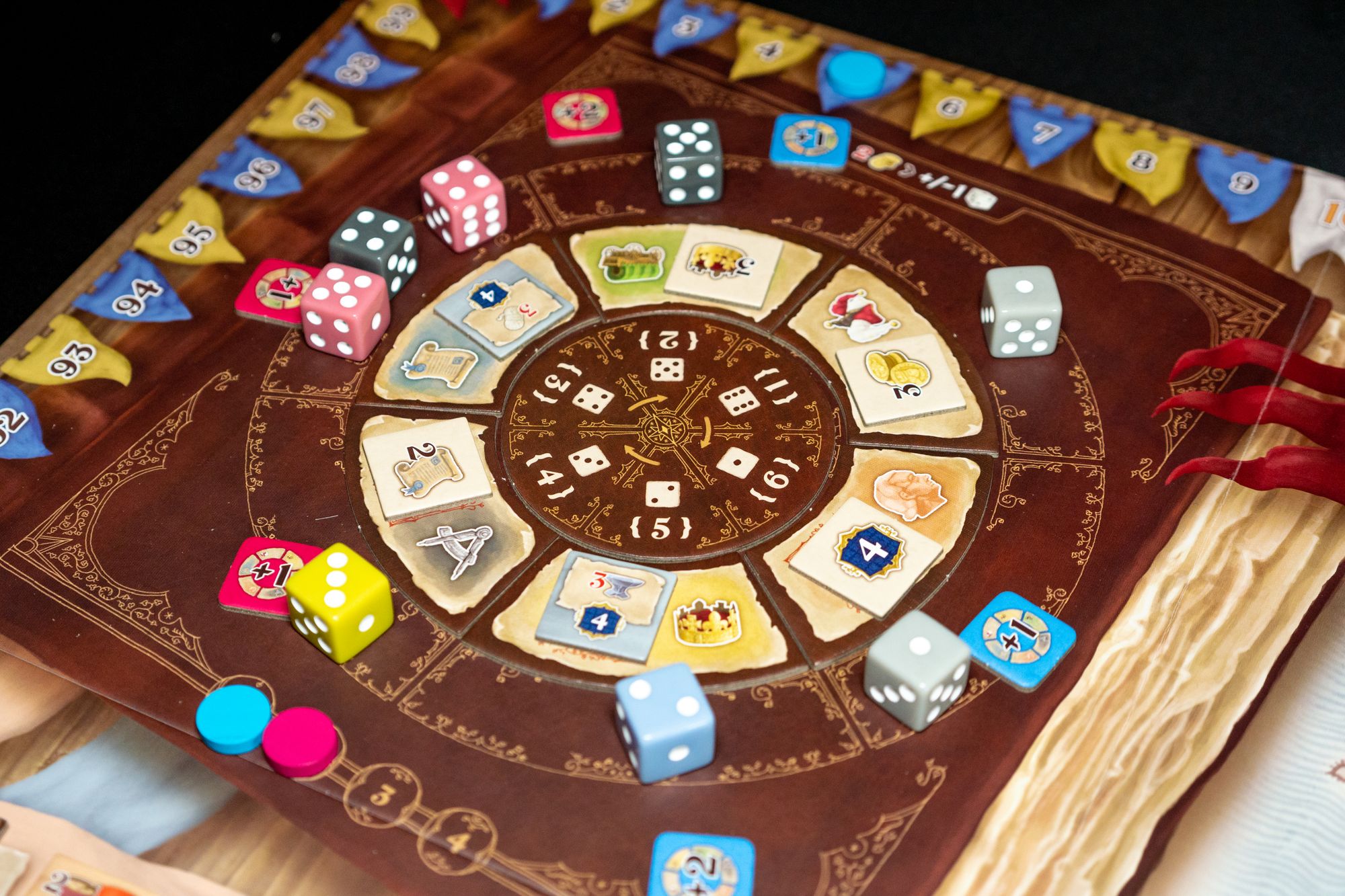
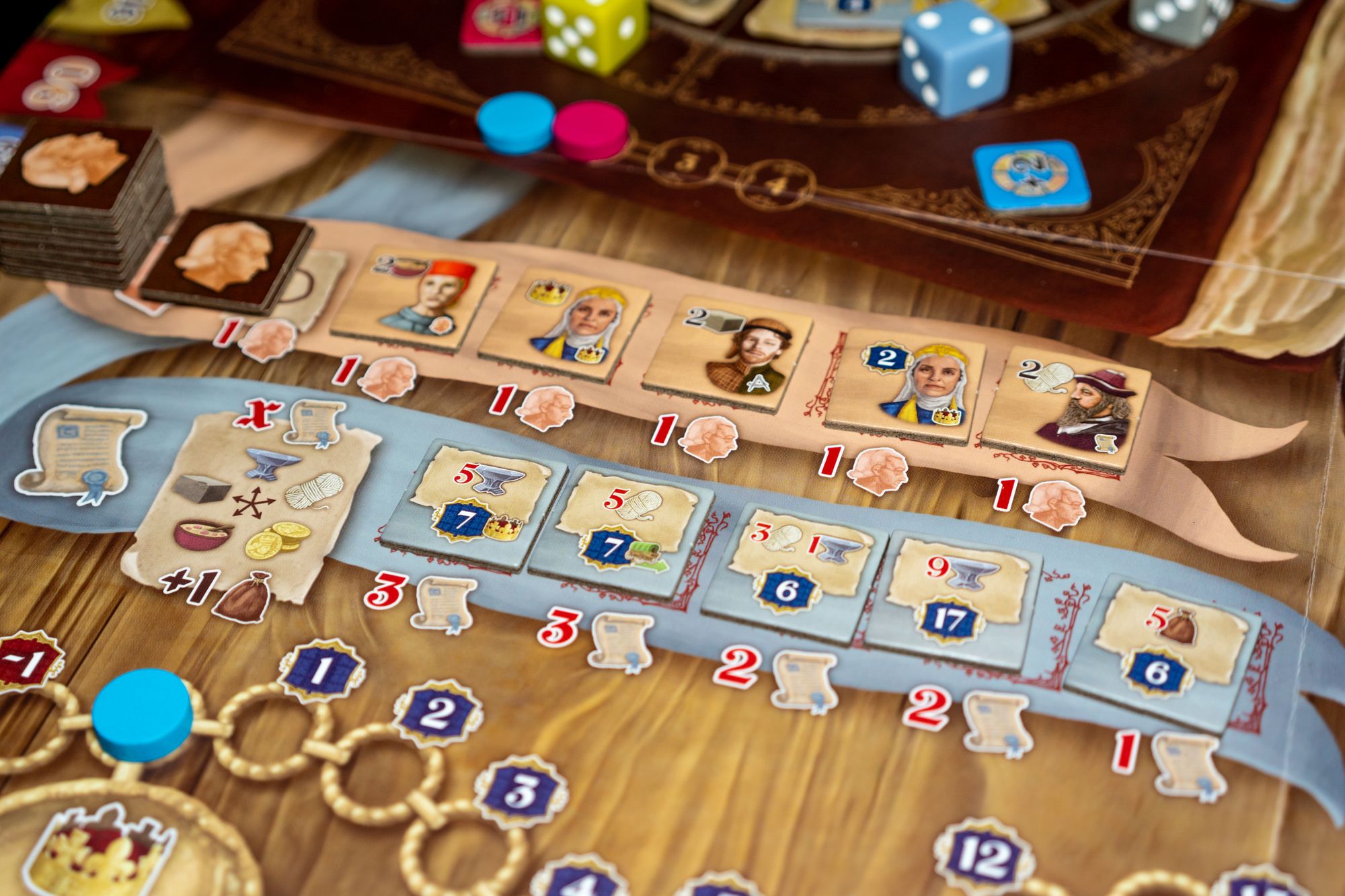
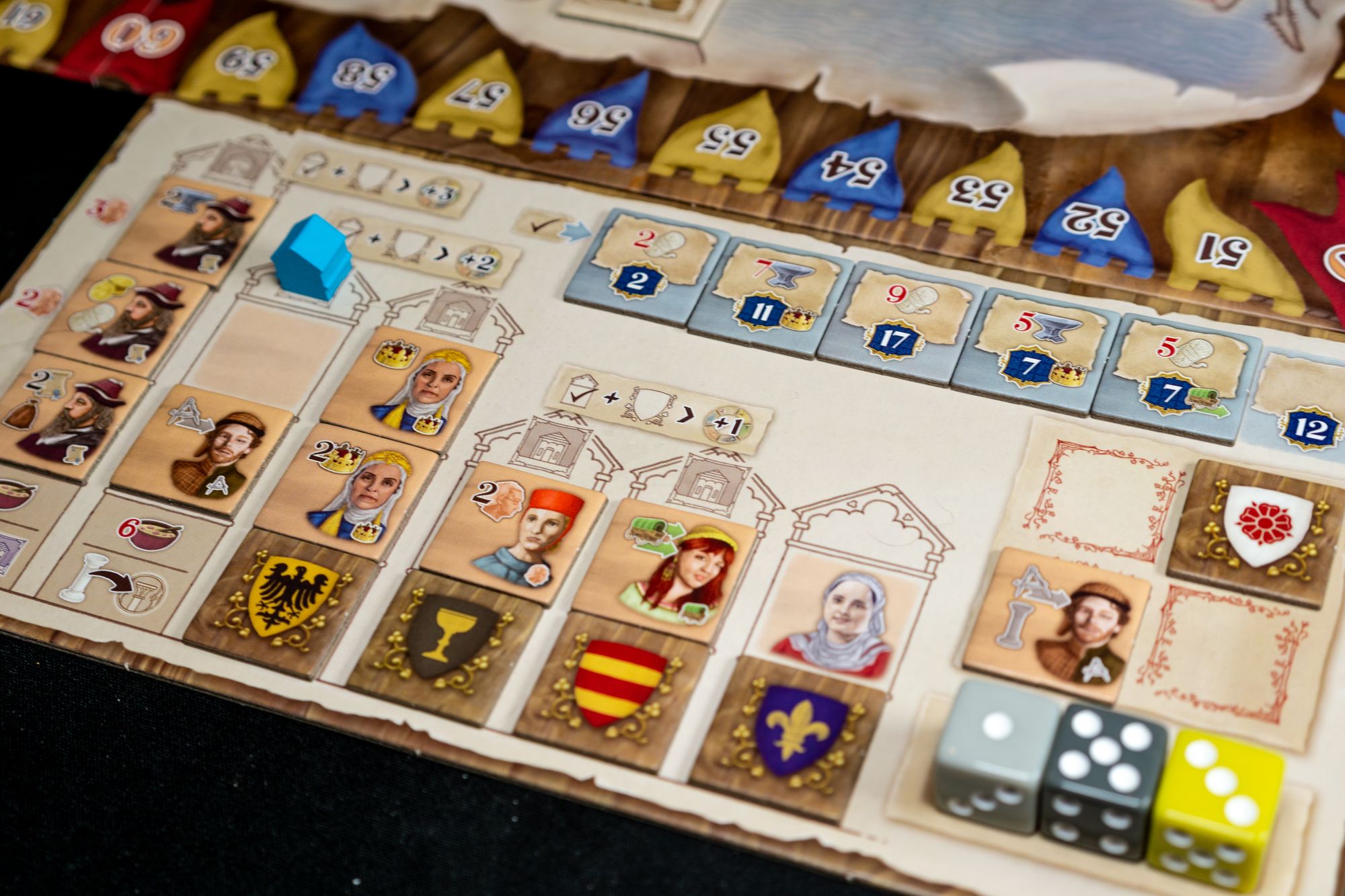
Gameplay
Tiletum is a dice management game in which dice have a dual function: gaining resources and performing actions. A certain number of dice will be rolled each round. On your turn, choose a die to gain the number of corresponding resources equal to the value of the die, then perform the associated action. The power of the action is inversely proportional to the value of the die, so the fewer resources you gain, the more powerful the actions you take, and vice versa.
The Architect action lets you move your architect on the map, pick up bonus tiles from the map, or place pillars. The Merchant action is similar to the Architect action, but instead, you're moving your merchant and placing houses. With the Character action, you can gain character tiles and move them onto your player boards' floors. Contract actions let you collect contracts and trade resources. The King action lets you move up on the King track. And lastly, the Joker Action can be used to perform any of the previous actions.
Besides your main actions, you can perform any number of free actions anytime during your turn. These so-called tasks are: spend two gold for any resource; Fulfill contracts; Spend food to place crests; Contribute to the building of a Cathedral where you've previously placed a pillar; Use a Helper bonus tile;
After players have chosen three dice, the round ends with a King scoring and Fair scoring. The King scoring will award or deduct points based on the positions on the King tracks. The Fair occurs in a different city each round (determined during set-up). To attend the Fair Scoring, you must have a house or a merchant in that city. Every game, different scoring conditions will be evaluated at the Fair.
After four rounds, the game ends, and final scoring takes place. The player with the most prestige wins the game!
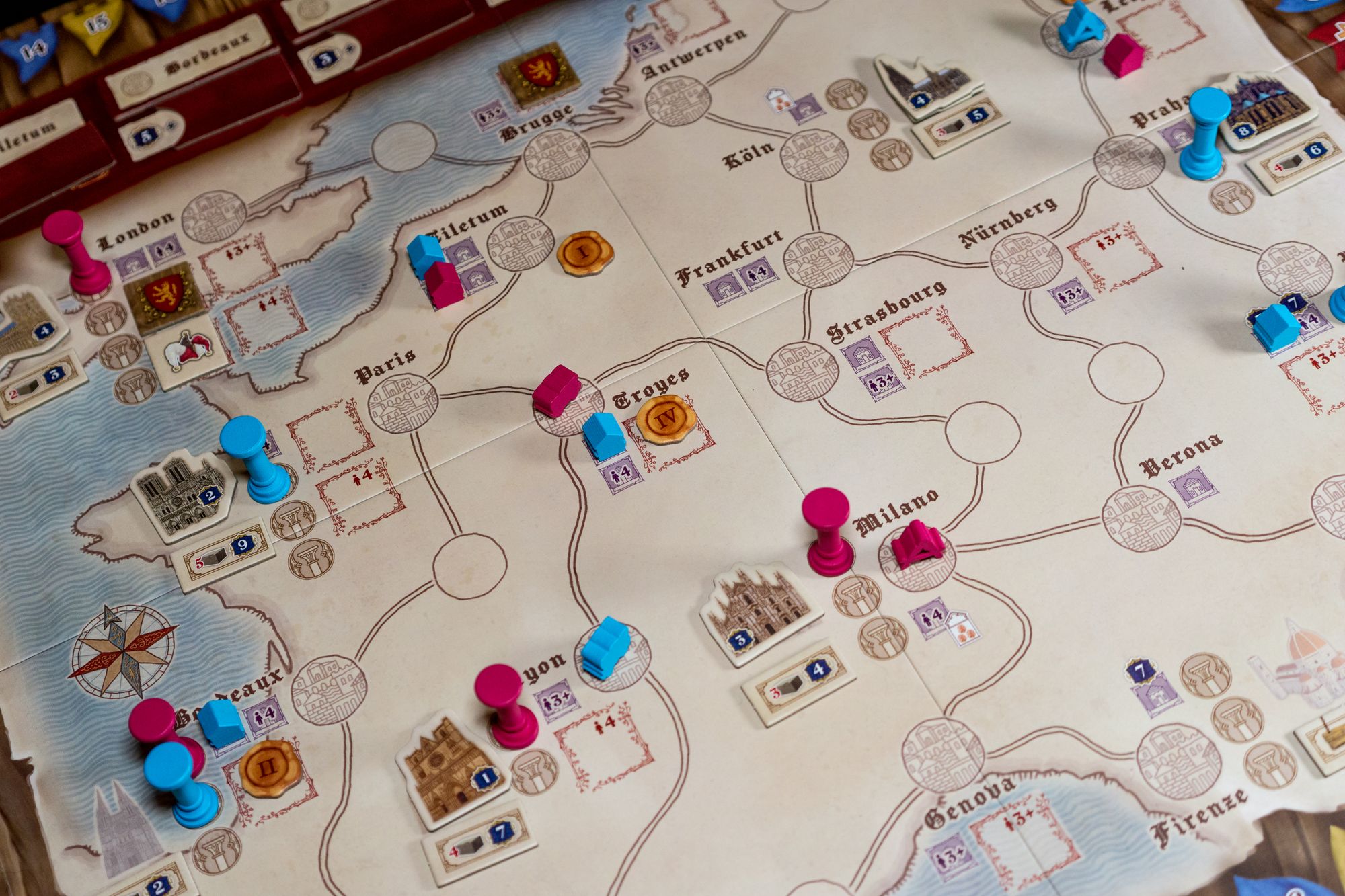
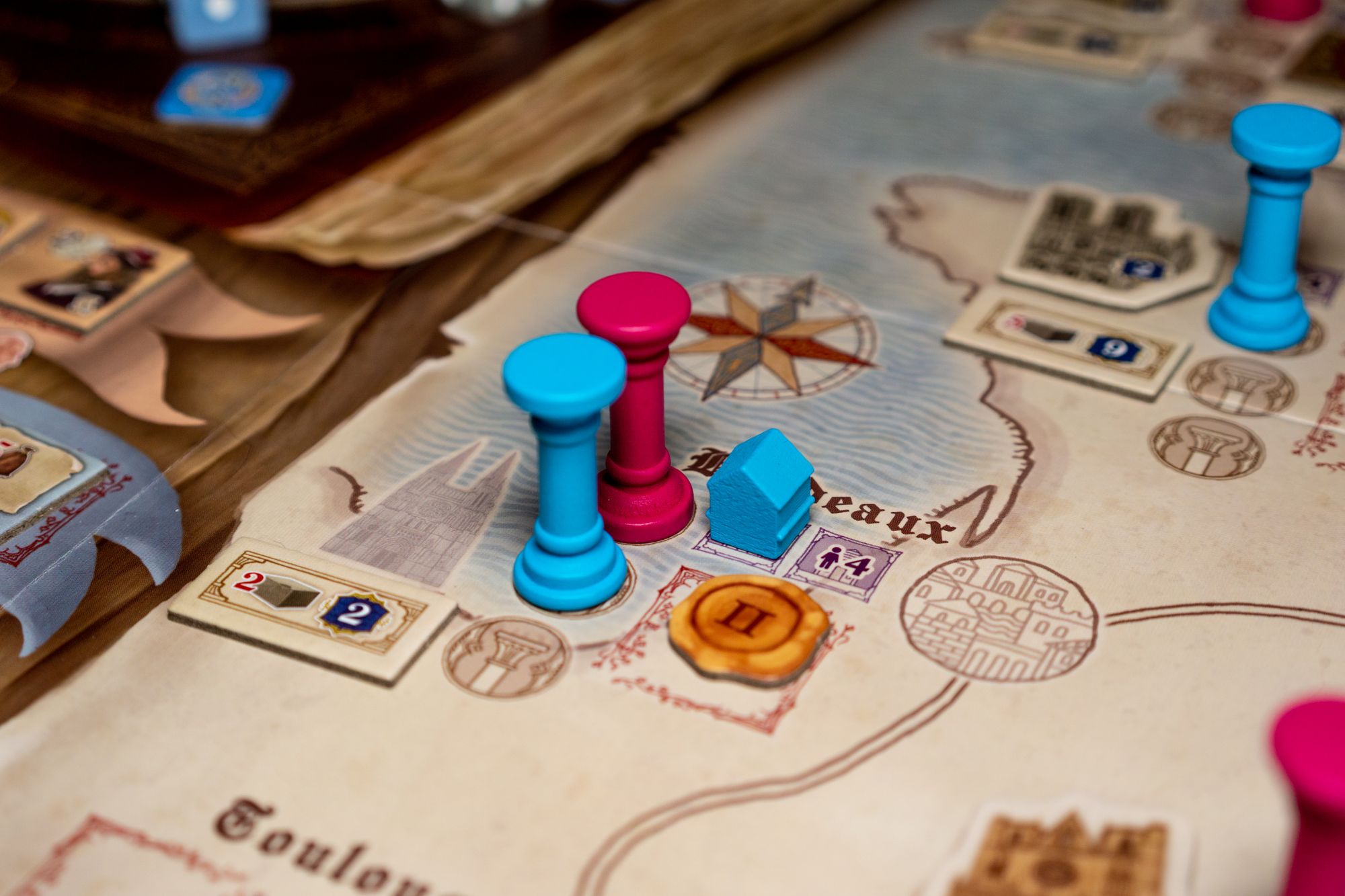
Thoughts
Let me start by saying that I quite like designs by Luciani and Tascini. I like how all mechanics are connected, there are various paths to victory, and each time you play will be different because of variable scoring/set-up. Hell, I'll even say that Teotihuacan is a Top 10 game of mine. However, all of their previous games have a downside for me, and that is that it can be hard to get back to a game if you haven't played it in a while because of the complex and extensive rulesets.
That is the main reason I'm pleasantly surprised with Tiletum. The ruleset is easy to grasp, and actions are straightforward. But you can still feel and experience that this is a game by the mentioned designer duo. Like I said before: mechanics are intertwined, with various strategic paths and variable scoring each time you play. Tiletum is remarkably replayable and also easier to get to the table.
The dice drafting is some of the best I've experienced, where you need to consider gaining loads of resources or action points. This, combined with the various bonuses you'll receive through free tasks and bonus helper tiles, can cause some bombastic chain reactions that feel very satisfying.
Fair scoring is also very exciting. To be able to participate in the Fair, you need to have your merchant there or a house. This adds a little racing element because not all players can build a house at each Fair location. Fair scoring can be very rewarding if you match your strategy to it. The downside is that it also pushes players in a specific direction since you can't ignore it because that is where most of the points will be coming from.
The artwork and color scheme might look bland to some players, but I think it fits the theme. There is undoubtedly more color than some of the other T-series games. I question the decision to choose light grey, dark grey, and blueish grey as 3 of the dice colors, as they can be pretty hard to distinguish in certain lighting conditions. I've had multiple people complain about this, especially as this is a crucial bit of information (as the color correlates to the type of resource you gain)
Tiletum scales well at all player counts. The number of players limits map spaces and dice allocation. With actions being fast and straightforward, turns are quick, and downtime is manageable. The sweet spot is probably three players, but I have also enjoyed it at two and four players.
👍 Streamlined T-series game with straightforward rules
👍 Dice drafting is some of the best out there
👍 Actions can result in bombastic chain reactions
👍 Fair scoring adds a racing element
➖ Fair scoring pushes players in a specific direction
➖ Three shades of grey/blue are hard to distinguish
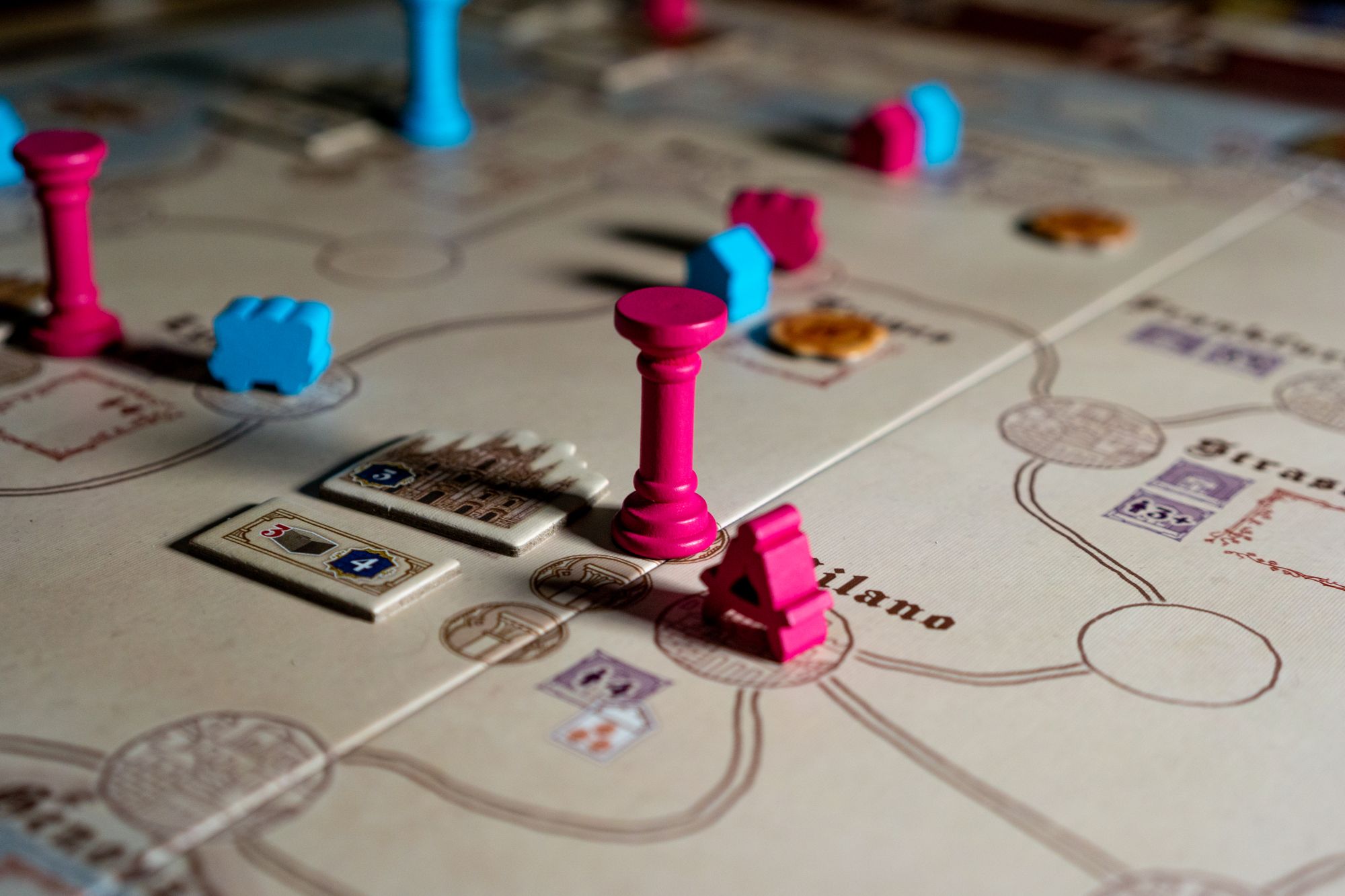
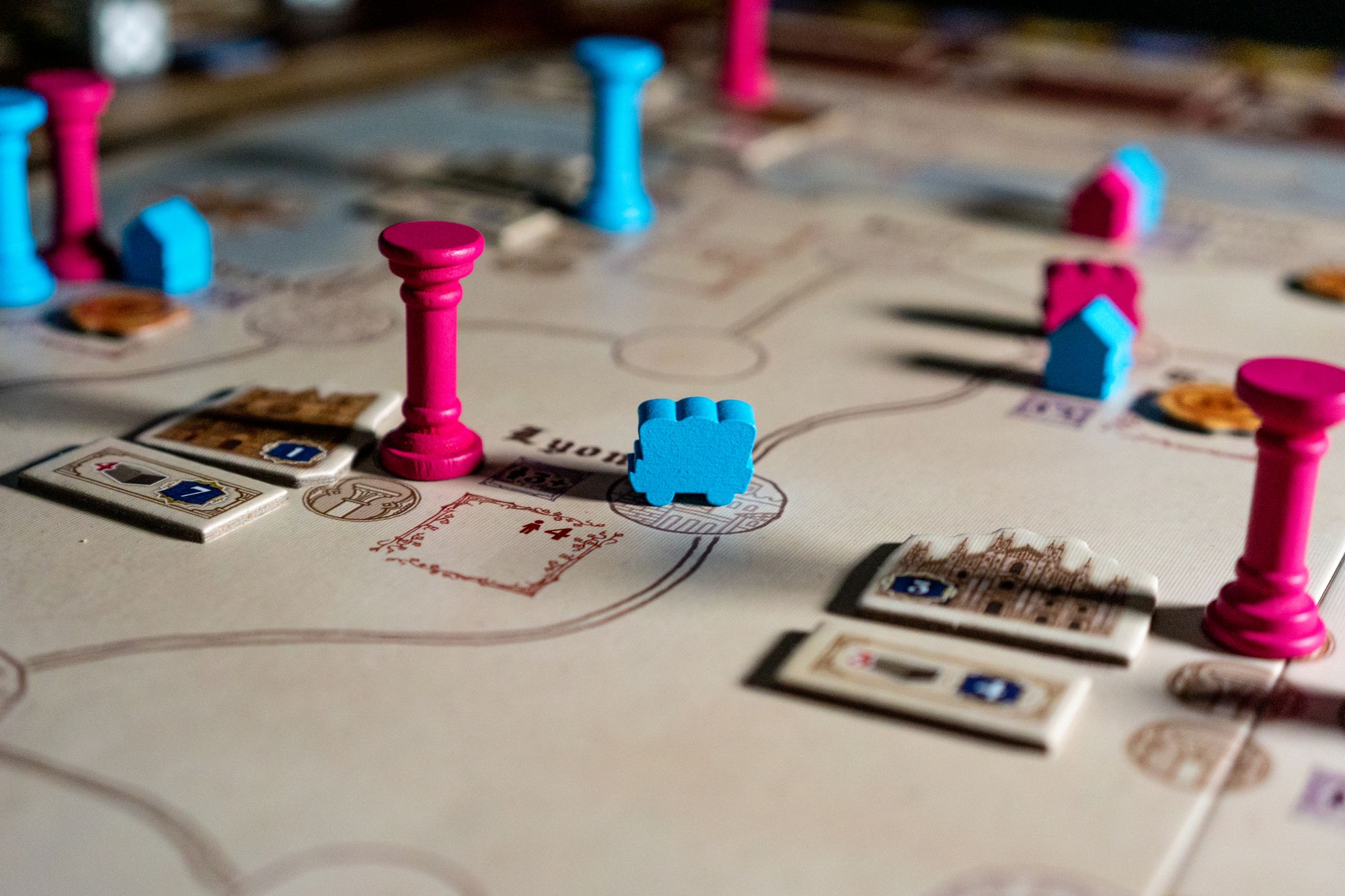
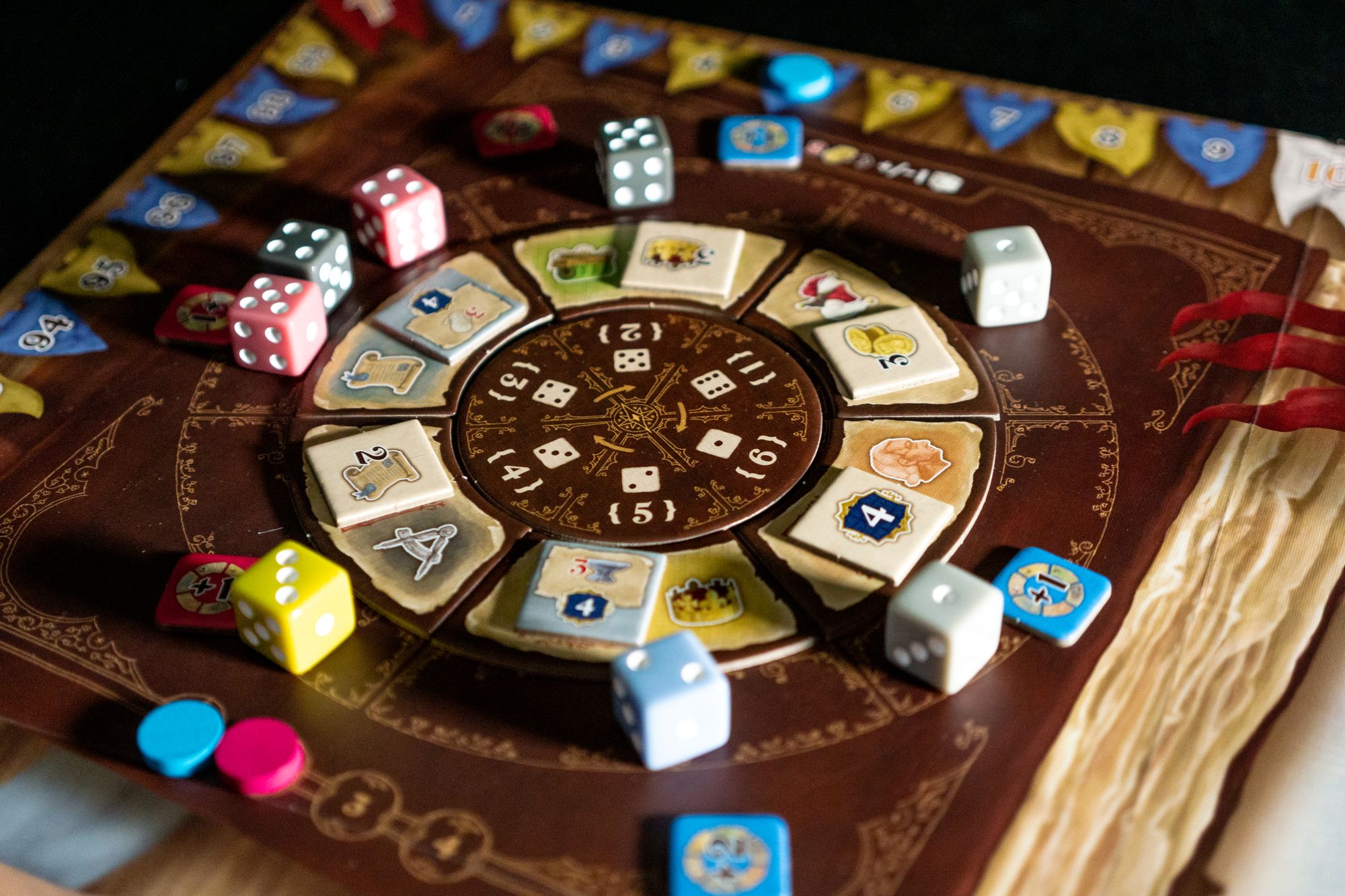
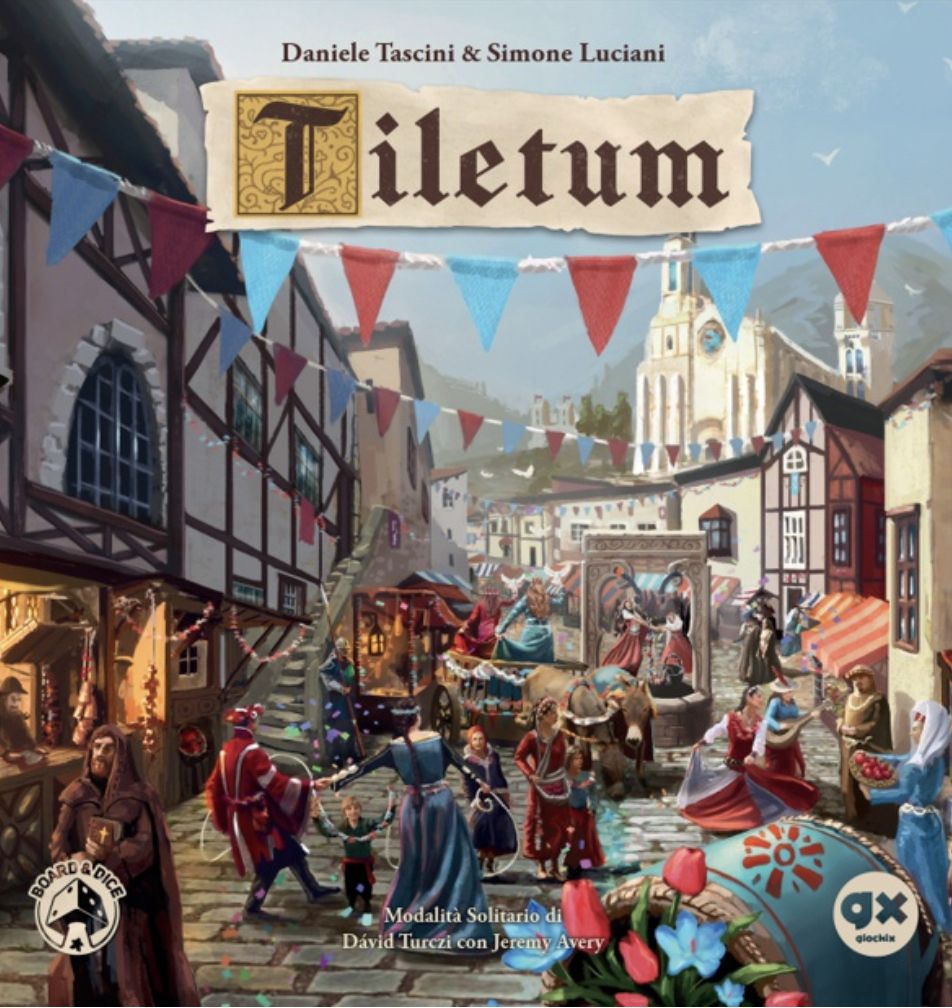
Tiletum
Overall, Tiletum is a lovely surprise and is a strong contender for game of the year for me. If it will replace Teotihuacan for my go-to Luciani and Tascini fix, only time will tell, but all signs are pointing in that direction. Strong mechanics, interactive gameplay, and streamlined rules make it an almost perfect game.
Alternatives
Looking for alternatives or similar games? Have a look at Tekhenu or Teotihuacan
